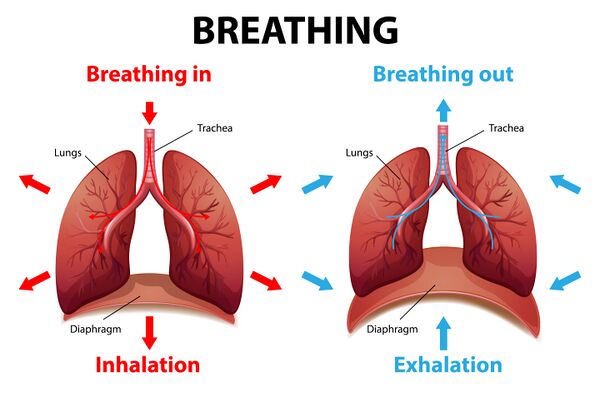Here are some core principles and techniques that can help you extend your breath-holding capacity.
Warm-up Breathing:
It’s important to warm up your ‘breathing muscles’ before you being your breath-hold.
STEP 1: Belly/Diaphragm Breathing – The Foundation
- Find a comfortable seated or lying position.
- Concentrate on the expansion of your belly during inhalation, gently returning it towards your spine upon exhalation.
- Keep your ribs and chest stationary.
- Visualize air filling the lower region of your belly.
- Dedicate a minute to practice this breathing technique.
STEP TWO: Intercostal/Rib Breathing – Expanding the Middle
- Shift your focus to your lower ribcage for this step.
- Maintain the stillness of your chest and belly while allowing your ribs to expand laterally during inhalation.
- As a helpful trick, position your thumbs on the sides of your ribs and let your fingers touch at the base of your breastbone. When you breathe in and expand your ribs, your fingers should separate.
- Spend one minute practicing this technique.
STEP THREE: Chest and Shoulder Breathing – Completing the Cycle
- Now, emphasize filling your upper chest with air.
- As you inhale, your chest should gently expand forward and upward, while your belly and ribs remain motionless.
- Allocate one minute to practice this stage.
Breathing for Relaxation:
After your warm-up breathing session, you should already be feeling comfortable and relaxed. But if you choose, you might enter a ‘relaxation breathing phase’ right before beginning your breathe-up.
Here’s what to do:
Relax your mind and lower your heart rate with slow-exhale breathing.
Spend more time exhaling than inhaling.
Exhaling lowers your heart rate – which is what you want to achieve.
Move to the breathe-up phase when you’re ready.
The Breathe-Up Phase:
The perfect breath-up is the one that allows to relax completely and helps you take a nice, full, deep breath when you’re ready to begin breath-holding.
Tidal Breathing:
Allow your breath to flow naturally
Relax your mind
Carry on for 2 to 3 minutes
Final Breaths:
Take a deep, full breath. Begin with the belly, then the ribs, and finally, the chest.
Avoid inhaling so deeply that it causes discomfort – aim for a comfortable, “full” sensation.
You’re now ready to being your breath hold.
Go here to read our post about diaphragmatic breathing.




Add Comment